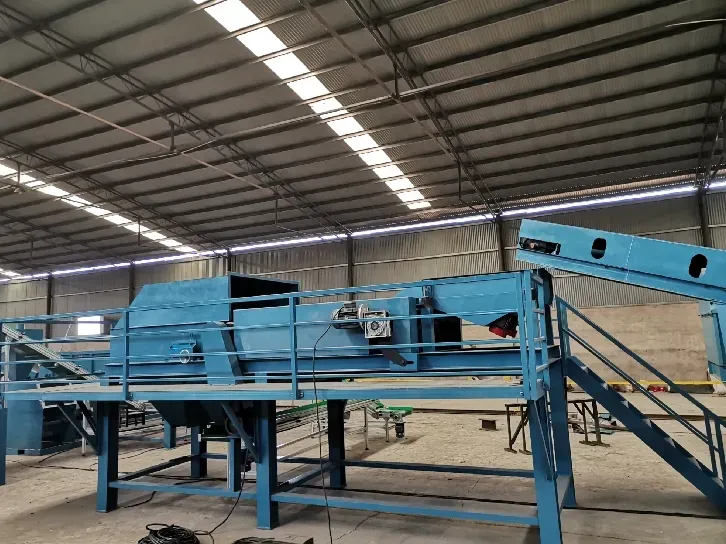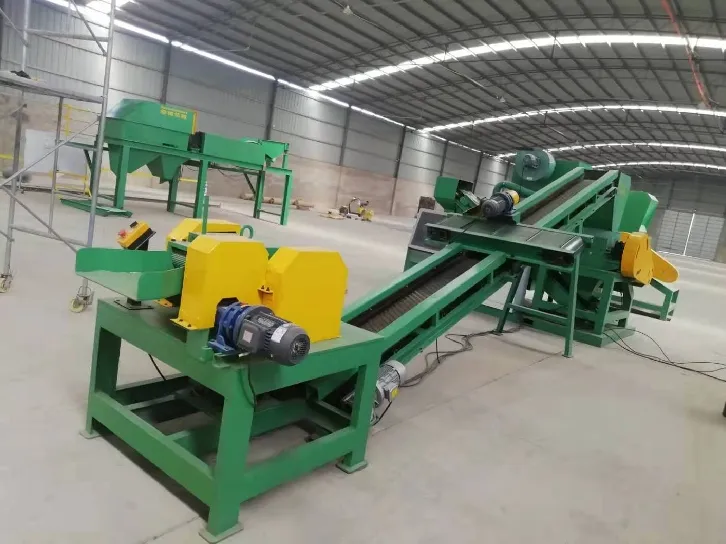Creating a homemade copper granulator can be both a rewarding and cost-effective endeavor for those in the recycling business or DIY enthusiasts looking to sustainably manage their copper waste. This comprehensive guide draws on expertise and experience in metal recycling to help you understand the fundamentals of building an efficient copper granulator at home and ensuring its effectiveness over time.

Copper granulators are vital in recycling operations as they help separate valuable copper from plastic insulation in wires and cables, allowing you to reprocess these materials. Constructing one yourself requires a sound knowledge of mechanical design, the right materials, and a commitment to ensuring safety throughout the process.
Understanding the Granulating Process

The main function of a copper granulator is to shred the wires into smaller pieces and then separate the copper from the insulation materials. The separation is typically achieved through a combination of gravity and air flow, which efficiently isolates the copper due to its weight and density.
To build one, you need to first comprehend the mechanics behind wire and cable shredding. The granulator consists of several components, including a granulating device, a vibrating separator, and auxiliary machines like conveyors. Each part plays a crucial role in breaking down and segregating the raw materials.
Sourcing the Materials
For your homemade machine, acquiring high-quality materials is critical. You will need
1.
Durable Metal Blades These are the core shredding components of your granulator. Opt for blades made from high-strength steel to ensure they can handle continuous usage without frequent wear.
2. Sturdy Frame The granulator's framework should be robust enough to withstand vibrations. Using a stainless steel or a reinforced metal frame will prevent structural damage over time.
3. Electric Motor A reliable motor is essential for the consistent operation of your granulator. Ensure the motor is compatible with the power requirements of the granulator and has enough horsepower to process a variety of wire thicknesses.
Construction and Design
homemade copper granulator
Design your granulator with efficiency in mind. Begin by securing the blade assembly within the frame while allowing enough clearance for materials to enter the granulating chamber. Notches or grooves in the chamber can assist in gripping and directing the wires towards the blades.
Your design should also incorporate an easy-to-clean feature. Regular maintenance is essential to prevent the buildup of dust and debris which could hamper the device's performance.
The vibrating separator should be fine-tuned to ensure it effectively separates copper from the insulation with minimal loss. Adjustable speed controls and angles can be useful features to refine the separation process according to the type and size of materials being processed.
Operational Tips and Safety
Operating a homemade copper granulator safely and efficiently requires adherence to certain guidelines
- Safety Gear Always use protective eyewear and gloves when operating the granulator to prevent injury from wire shards or machine components.
- Regular Maintenance Inspect and sharpen the blades regularly to maintain precise cutting efficiency. Motor parts should also be checked and lubricated periodically to prevent mechanical failures.
- Loading Capacity Avoid overloading the granulator to ensure it functions smoothly. Overloading could damage the motor or lead to uneven granulation.
Benefits and Considerations
Building your copper granulator not only reduces costs associated with industrial recycling equipment but also grants you control over the granulating process. You can tailor the machine’s settings to suit specific wire types, enhancing your recycling effectiveness.
Despite these advantages, bear in mind that building a granulator requires a degree of mechanical skill. Errors in construction could result in inefficient separation or even damage to the machine.
Conclusion
Creating a homemade copper granulator demands a combination of technical expertise and practical experience. The potential savings and efficiency gains are significant, but the endeavor must be undertaken with care and dedication to safety and quality. By following the principles of sound design and operation, you can craft a granulator that stands up to professional standards and meets your recycling needs.


